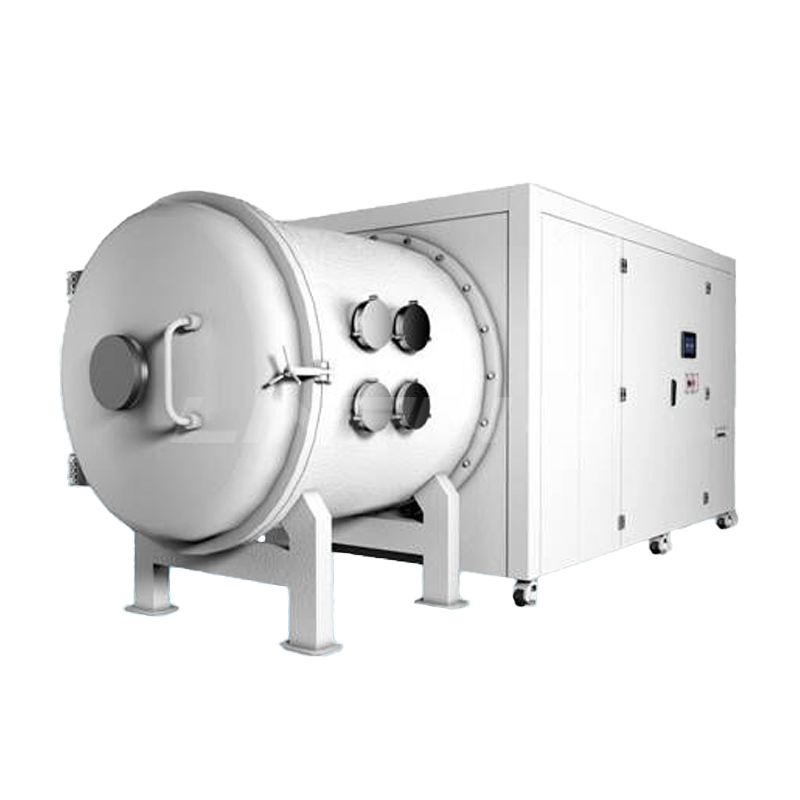In the relentless pursuit of reliability for systems destined for the space environment, thermal vacuum (TVAC) testing stands as the ultimate crucible. The fidelity, accuracy, and ultimate success of these tests are intrinsically linked to the performance capabilities of the test chamber itself. This article provides a rigorous examination of the core technical parameters that distinguish superior thermal vacuum test chambers. By elucidating the significance of vacuum level, thermal range and stability, and chamber geometry, we aim to establish a framework for evaluating chamber performance and underscore the engineering excellence required to validate mission-critical hardware.
1. Introduction
The space environment presents a unique confluence of extreme conditions: high vacuum, intense solar radiation, and profound temperature cycles. To ensure the survival and functionality of satellites, spacecraft components, and instrumentation, they must be rigorously tested on Earth under conditions that accurately simulate these extraterrestrial stresses. Thermal vacuum test chambers are the sophisticated instruments designed for this critical purpose. However, not all chambers are created equal. Their capability is quantitatively defined by a set of core technical parameters. Understanding these parameters is essential for aerospace engineers, project managers, and quality assurance specialists to select the right equipment, thereby mitigating program risk and ensuring mission success. This document delineates these pivotal parameters, articulating not just their definitions but their profound implications for testing integrity.

2. The Foundational Parameter: Vacuum Level and Quality
The ability to create and maintain a high vacuum is the most fundamental characteristic of a TVAC chamber. It removes convective heat transfer, forcing the test article to interact with its surroundings solely through radiation, just as it would in space. This parameter is measured in units of pressure (e.g., Pascals, mbar, Torr).
-
Ultimate Vacuum: This refers to the lowest pressure attainable by the chamber's vacuum system. While space approaches a perfect vacuum (around 10^{-14} Pa), terrestrial chambers aim for levels that sufficiently approximate the near-vacuum conditions of Low Earth Orbit (LEO), typically requiring an ultimate vacuum of 10^{-5} Pa to 10^{-7} Pa or better. Achieving this requires a multi-stage pumping system, typically comprising robust roughing pumps, high-capacity Roots blowers, and high-vacuum pumps like cryopumps or turbomolecular pumps. Cryopumps are particularly valued for their ability to achieve clean, high-vacuum levels efficiently by condensing gas molecules onto cold surfaces, simulating the cryogenic pumping effect of space itself.
-
Total System Leak Rate: A low ultimate vacuum is meaningless if it cannot be maintained. The leak rate, measured in mbar·L/s, quantifies the integrity of the chamber. An exceptionally low leak rate ensures that outgassing from the test article—the release of trapped gases from materials—is the dominant pressure contributor, not leaks from the atmosphere. This is critical for accurate thermal balance calculations and for testing sensitive components that could be contaminated by atmospheric gases. A superior chamber boasts a leak rate typically better than 1x10^{-9} mbar·L/s.
-
Cleanliness and Outgassing Control: Beyond mere pressure, the quality of the vacuum is paramount. Chambers designed for optical systems, sensitive detectors, or microelectronics must be "clean." This involves using vacuum-compatible materials with low outgassing rates (e.g., specific grades of stainless steel), employing dry pumping systems to avoid oil contamination, and incorporating internal surfaces that are electropolished and easy to clean.
3. The Thermal Regime: Range, Ramp Rates, and Stability
Simulating the intense thermal cycles of orbiting a planet—from the searing heat of direct sunlight to the deep cold of planetary shadow—is the second pillar of TVAC testing. The thermal system's performance is defined by three interrelated parameters.
-
Temperature Range: This specifies the extreme high and low temperatures the chamber can achieve. A typical range for space simulation is -180°C to +150°C. The lower limit is often achieved using liquid nitrogen (LN2), while the upper limit uses electric heaters. The ability to reach cryogenic temperatures is crucial for testing components that will experience the cold sink of deep space.
-
Temperature Ramp Rates: The speed at which the chamber can transition between temperature extremes is a key differentiator. Faster ramp rates (e.g., >10°C/min) allow for more aggressive test profiles, reducing test duration and costs while better simulating the rapid transitions experienced by satellites in certain orbits. This capability is heavily dependent on the design of the thermal shroud—the internal surface that radiates heat to or absorbs heat from the test article—and the efficiency of the LN2 and heating systems.
-
Temperature Uniformity and Stability: Perhaps the most critical thermal metric is the ability to maintain a uniform temperature across the test article and stabilize it at a setpoint. Non-uniformity can induce unwanted thermal gradients in the test item, leading to inaccurate performance data. Stability refers to how tightly the system can control temperature over time at a specific setpoint (e.g., ±0.5°C or better). This requires sophisticated control algorithms and a well-designed shroud with precise zoning capabilities to compensate for varying heat loads across the test article.

4. The Physical Envelope: Chamber Geometry and Shroud Configuration
The internal dimensions and configuration of the chamber dictate the size and type of hardware that can be tested.
-
Useable Workspace: The internal diameter and height of the chamber, minus the space occupied by the thermal shroud and feedthroughs, define the usable workspace. It must accommodate not only the test article but also its support fixture (often designed to have low thermal conductivity) and any ancillary equipment. A well-designed chamber maximizes the usable volume relative to its footprint.
-
Thermal Shroud Design: The shroud is the heart of the thermal system. It is typically a copper panel system through which LN2 is circulated for cooling, with embedded heaters for heating. Advanced shrouds feature multiple independent zones, allowing engineers to apply different thermal profiles to different sections of a large test article, creating a more realistic spatial thermal environment.
-
Feedthroughs and Access Ports: A chamber's versatility is defined by the number, type, and size of its feedthroughs. These ports allow for electrical connections (power, data), fiber optics, fluid lines (for cooling loops), and mechanical actuation to be passed into the vacuum environment without compromising its integrity. A generous number of standardized (CF, ISO-K) and custom-sized ports are a hallmark of a flexible, future-proof design.
5. Integrated Capabilities: Control, Data Acquisition, and Safety
Beyond the core physical parameters, the sophistication of the control and data acquisition system is what transforms a mere chamber into a precision instrument.
-
Automated Control System: Modern chambers are governed by programmable logic controllers (PLCs) and human-machine interface (HMI) software. This allows for the creation, execution, and meticulous logging of complex test profiles, ensuring repeatability and traceability. Remote monitoring and control capabilities are essential for long-duration tests.
-
High-Fidelity Data Acquisition (DAQ): The system must accurately measure and record a multitude of parameters: temperatures (via numerous thermocouples or RTDs), pressures at various stages of the vacuum system, and data from the test article itself. High-channel-count, high-accuracy DAQ systems are integral for comprehensive analysis.
-
Comprehensive Safety Interlocks: Safety is non-negotiable. Redundant safety systems protect both the chamber and the valuable test article. These include over-temperature and over-pressure protection, LN2 flow monitoring, vacuum level interlocks, and emergency purge systems to rapidly vent the chamber with dry nitrogen if necessary.
6. Conclusion: A Symphony of Precision Engineering
The performance of a thermal vacuum test chamber cannot be reduced to a single specification. It is the synergistic integration of its core parameters—the deep, clean vacuum; the precise, rapid, and uniform thermal control; the versatile physical envelope; and the intelligent control system—that defines its true capability. Selecting a chamber based on a holistic understanding of these parameters is a critical strategic decision. It is an investment not just in a piece of equipment, but in the certainty of performance, the reduction of program risk, and the ultimate success of missions that push the boundaries of human exploration and technological achievement. By prioritizing engineering excellence across all these dimensions, leading TVAC manufacturers provide the indispensable foundation upon which the reliability of space-bound technology is assured.












